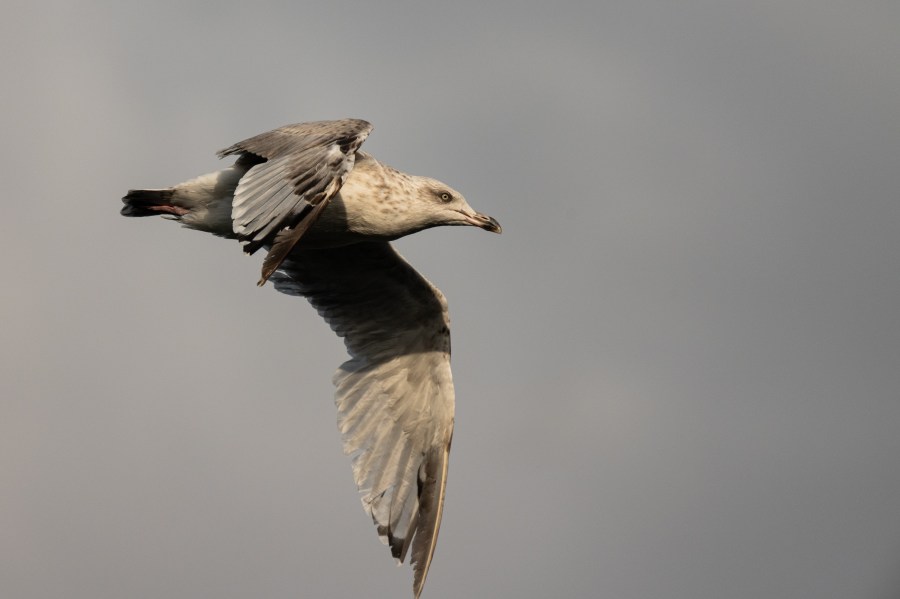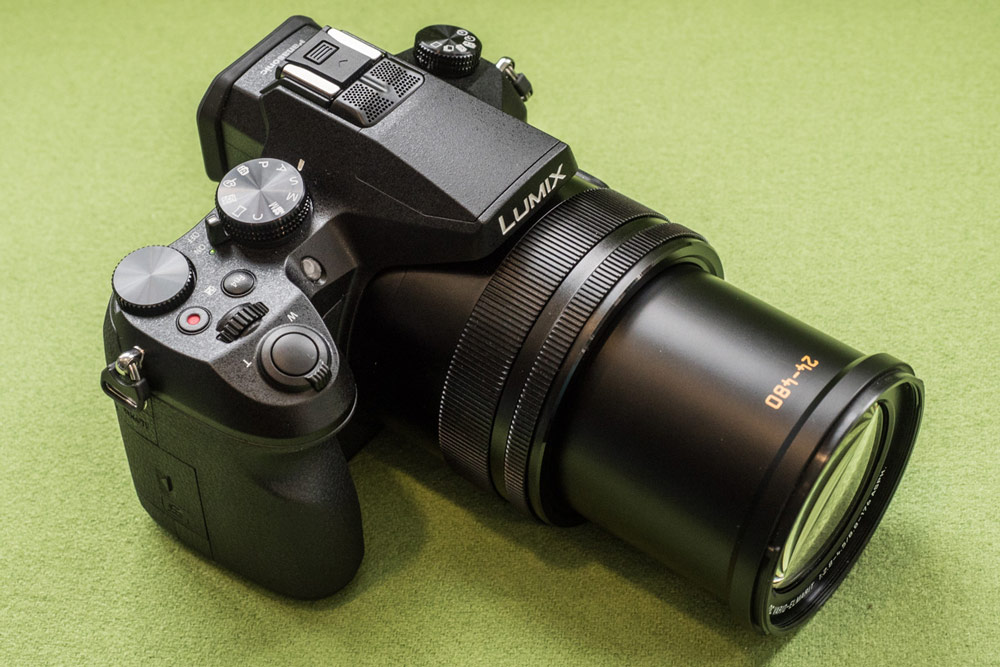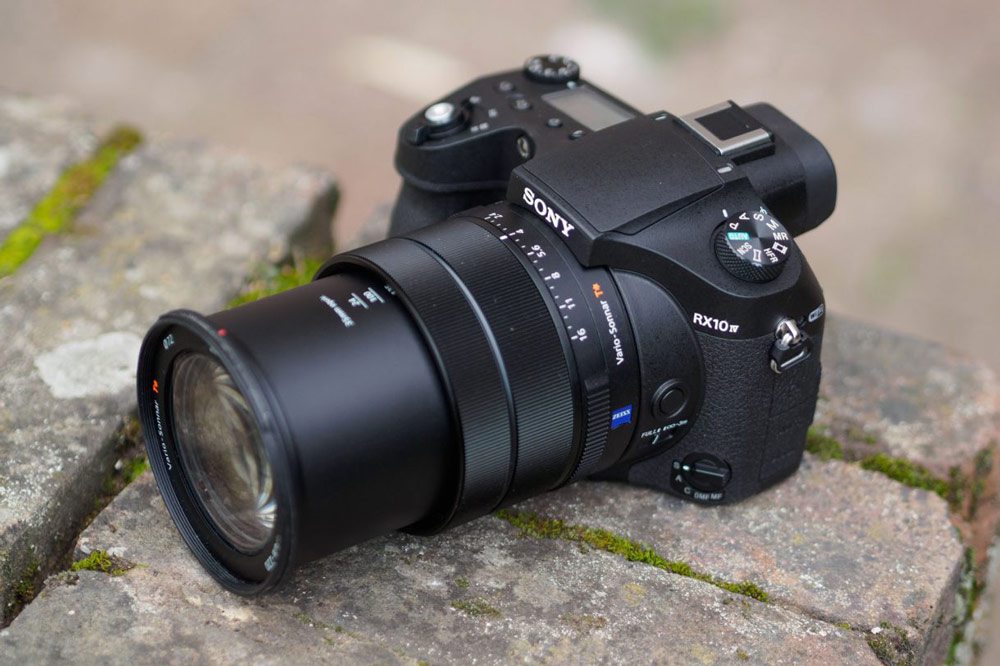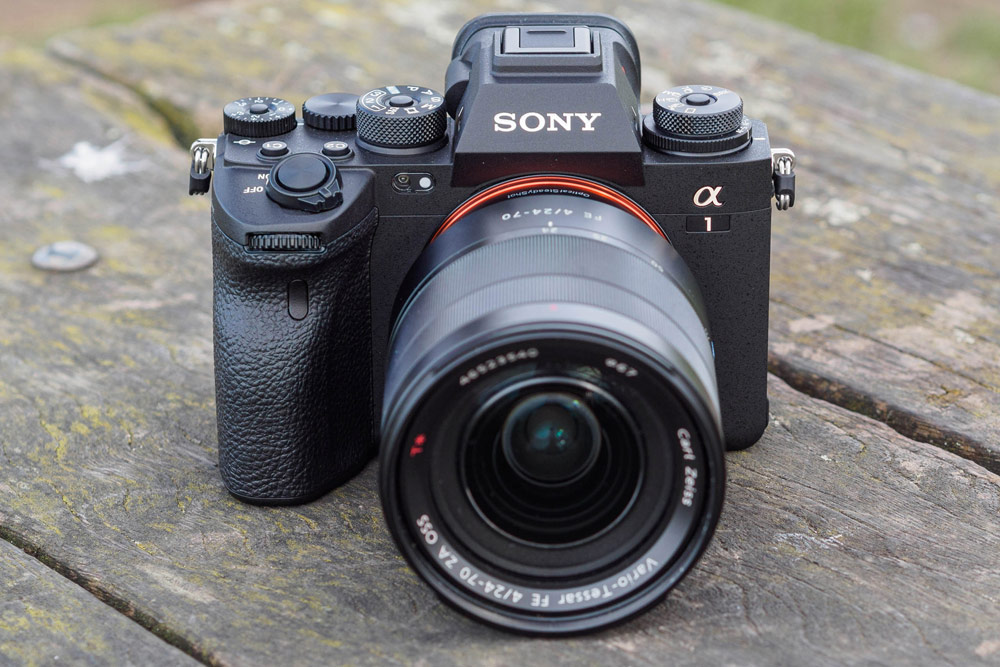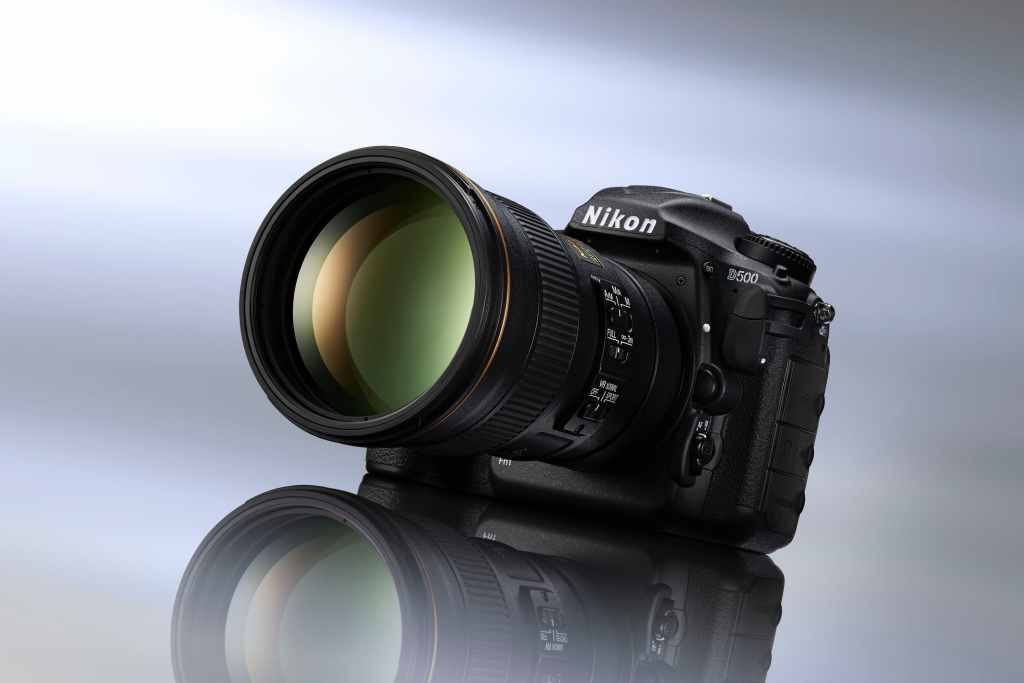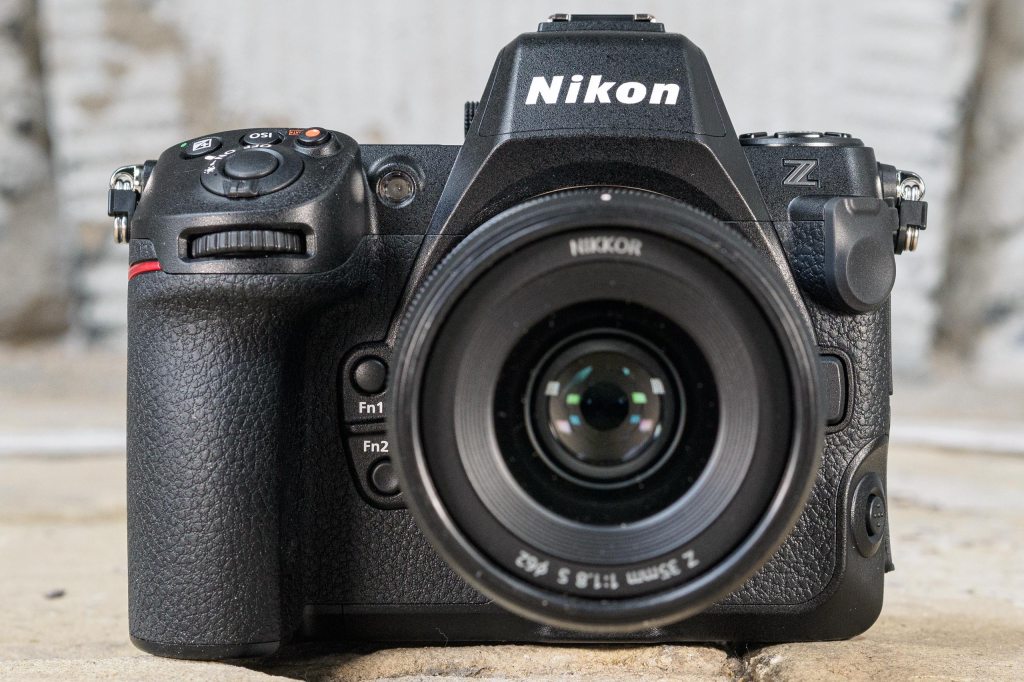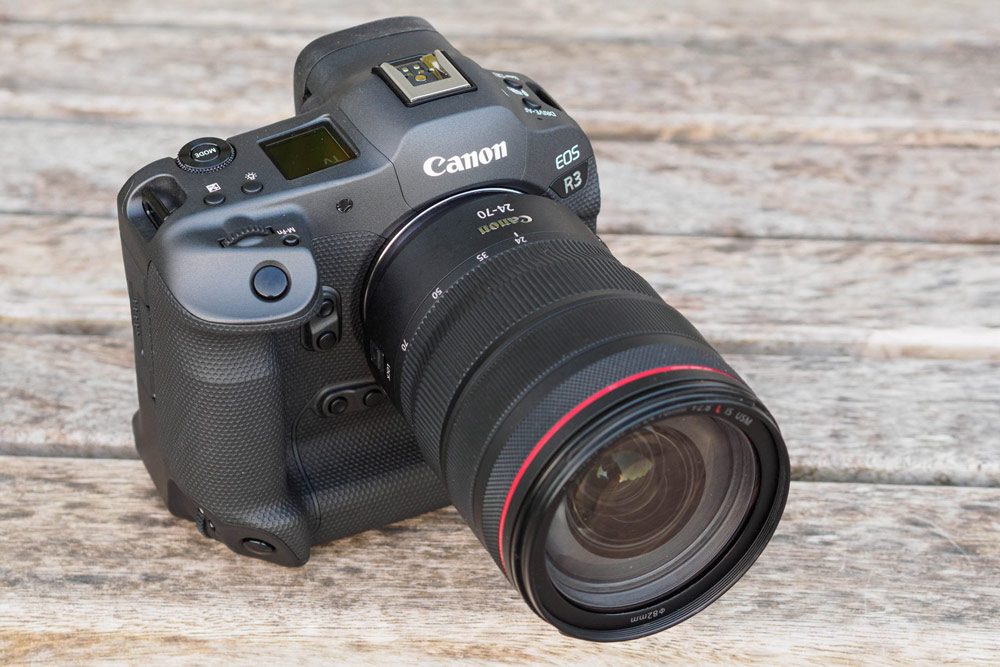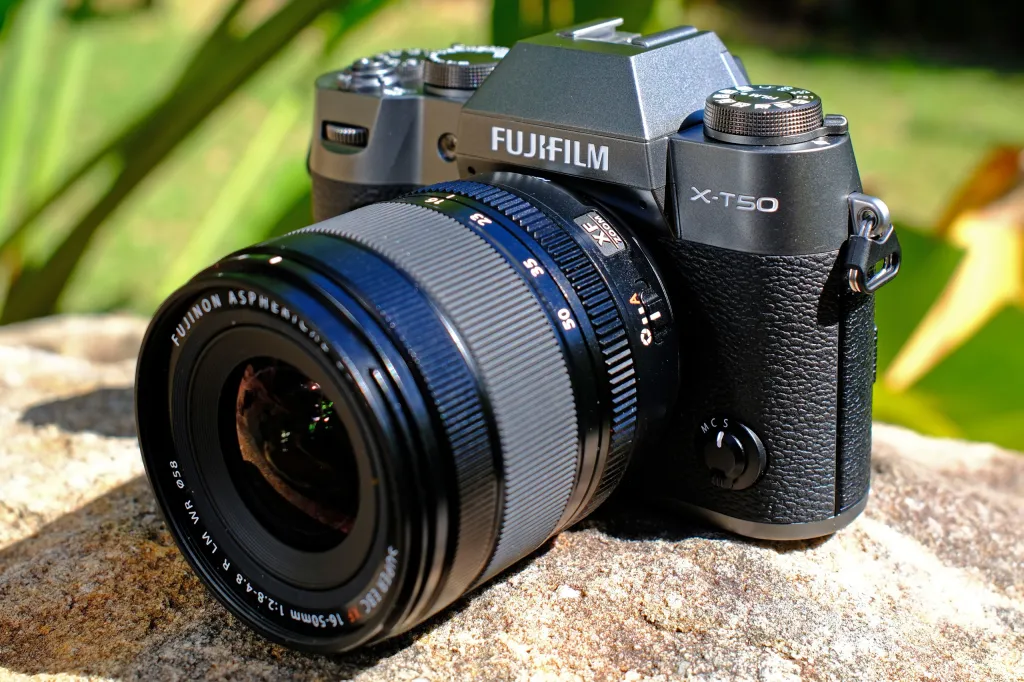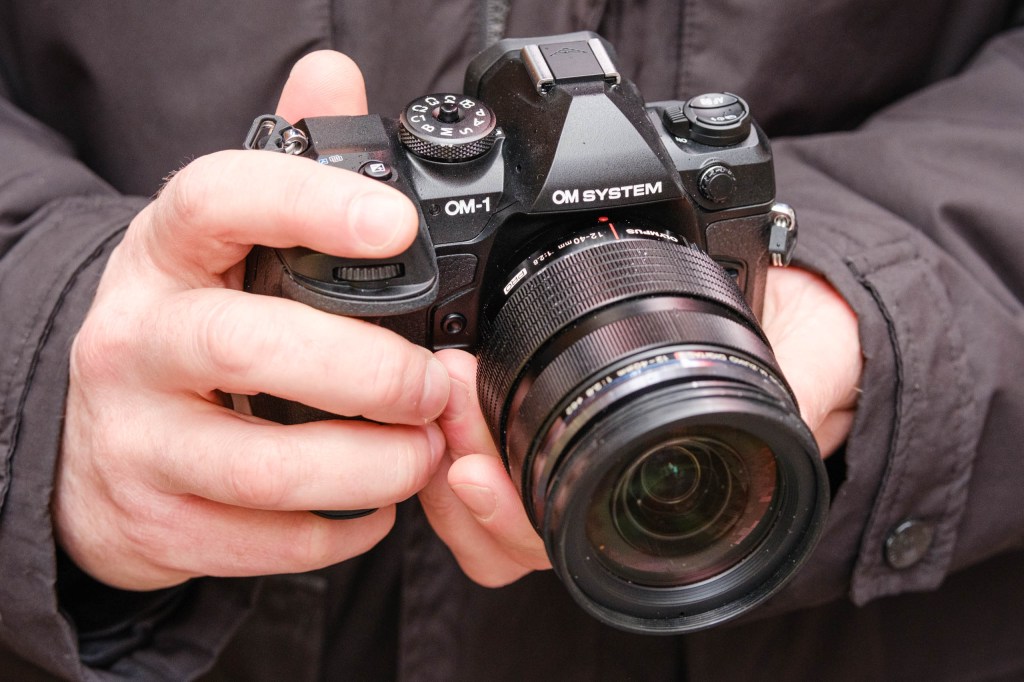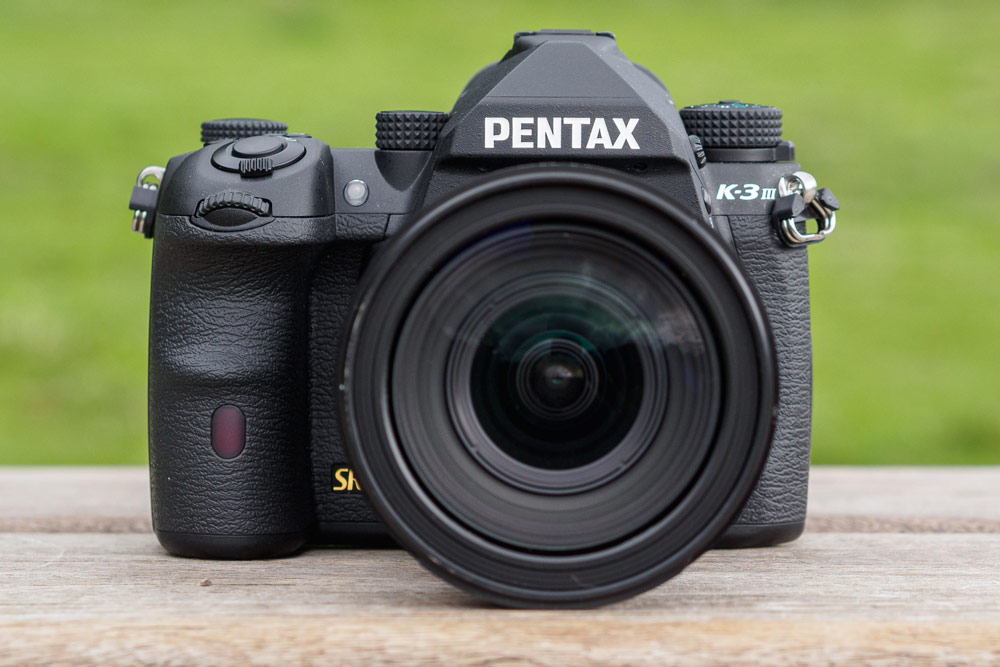With a great camera for wildlife photography, you can capture pin-sharp, glorious, frame-filling images of wild animals. A smartphone generally won’t cut it in this field of photography: you need the speed, telephoto power and raw image resolution of a proper camera with a high-quality lens.
This guide contains the absolute best mirrorless cameras, compacts and DSLRs that have impressed our reviewers with their speed, quality and accuracy, earning them a hard-won spot on this list. The cameras here come at a range of prices, especially if you shop second-hand; wildlife photography can be done fairly cheaply for those with a limited budget.
What you need in a wildlife camera is reliable autofocus, a decent enough burst rate to keep up with fast movement, and a long lens, or the ability to field one. We go into more detail on this in our section on how to choose at the bottom of the page, so head there first if you need a primer.
Acquiring the right camera is an important first step for those who want to photograph wildlife. We expand on using autofocus, burst rates and long lenses in our complete guide to wildlife photography
Remember that if you pick an interchangeable-lens camera (a mirrorless camera or DSLR), you’ll need to factor in the cost of a suitable lens: see our guide to the best lenses for wildlife for suggestions. For now, here are the best cameras to use for wildlife photography.
Best cameras for wildlife photography: quick list
- Best beginner camera for wildlife photography: Panasonic Lumix DMC-FZ2000 – buy now
- Best professional camera for wildlife photography: Nikon Z9 – buy now
- Best bridge camera for wildlife photography: Sony Cyber-shot RX10 IV – buy now
- Best Micro Four Thirds camera for wildlife: Panasonic Lumix G9 II – buy now
- Best Sony mirrorless for wildlife: Sony Alpha 1 – buy now
- Best Nikon DSLR for wildlife photography: Nikon D7500 – buy now
- Best second-hand DSLR for wildlife: Nikon D500 – buy now
- Best Nikon mirrorless for wildlife: Nikon Z8 – buy now
- Best Canon DSLR for wildlife photography: Canon EOS 90D – buy now
- Best cheap Canon mirrorless for wildlife: Canon EOS R7 – buy now
- Best Canon mirrorless for wildlife: Canon EOS R3 – buy now
- Best mid-range Fujifilm camera for wildlife photography: Fujifilm X-T50 – buy now
- Best Fujifilm camera for wildlife: Fujifilm X-H2S – buy now
- Best Olympus/OM System camera for wildlife photography: OM System OM-1 Mark II – buy now
- Best Pentax camera for wildlife photography: Pentax K-3 Mark III – buy now
Looking for the best deal on a camera for wildlife photography? Not only will you find the best wildlife cameras, but also the best cheap wildlife camera deals, as our ‘Buy now’ buttons are setup to automatically take you to the best prices, from trusted retailers, plus you’ll also find a list of other retailers below each camera, so you can find the right deal for you.
Read on to find out how we rated and reviewed each of these cameras – and why we believe they are the best cameras for wildlife photography right now. For further reading, we have a dedicated guide to the best cameras for bird photography.
Why you can trust Amateur Photographer…
We spend many hours testing every product we recommend, in detail, in a variety of situations and shooting scenarios, and only use experts for our reviews, so you can be sure that you’re getting the best products. Find out more about our expert writers.
Best wildlife camera for beginners
Panasonic Lumix DMC-FZ2000
Amateur Photographer verdict
A camera with built in ND filters and 12 frames per second continuous shooting, this lightweight superzoom bridge is ideal for someone starting out with wildlife photography- Broad zoom range
- Deep shot buffer
- Very reasonable price
- Smaller sensor than mirrorless models
- Big zoom inevitably compromises sharpness
At a glance:
- Compact / bridge
- 20.1 MP 1.0-type CMOS sensor
- 24-480mm equiv. f/2.8-4.5 lens
- 49-point autofocus
- 12fps continuous shooting
- Price: $998 / £899
The main draw for the FZ2000 is its built-in 20x zoom lens, which is equivalent to a 24-480mm lens on full-frame. That’s long enough for all but the most timid of subjects. Yet, the same lens can also zoom out far enough to show large animals in their habitat. It’s paired with a 1-in type sensor that’s larger, and therefore gives better image quality than those in cheaper bridge cameras.
This impressive zoom range is paired with the ability to shoot at up to 12 frames per second for just over 30 raw files or 100 JPEGs, which means you can catch split-second moments. For unpredictable action, Panasonic’s unique 4K Photo Mode enables up to 60 frames to be shot at 30fps in 4K resolution, or approximately 8MP. You also get an OLED viewfinder with 2.36m dots and a good-sized 0.74x magnification, along with a 3-in 1.04m-dot vari-angle screen that’s useful for shooting from high or low angles. This camera is a great choice for those on a budget, as a telephoto zoom lens can easily cost as much.
If $1,000 / £900 is more than you’re prepared to spend, there’s always the older Lumix DMC-FZ1000 ($680 / £549) and DMC-FZ1000 II ($945 / £749) to consider.
Read our hands on review of the Panasonic Lumix DMC-FZ2000
Best professional camera for wildlife
Nikon Z9
Amateur Photographer verdict
The first mirrorless model to put itself forward as a comprehensive replacement for pro full-frame DSLRs, and it delivers impressively on its promise- Stunning full-frame image quality
- Robust, high-quality build
- AI-powereed autofocus
- Loads of great lenses (with F-mount options via adapter)
- Expensive
- And requires expensive memory cards
At a glance:
- Mirrorless
- 45.7MP full-frame stacked CMOS sensor
- Nikon Z lens mount
- 493-point autofocus with Subject Recognition
- 30fps full-res JPEG; 120fps at 11MP
- Price: $5,497 / £4,999
For professional wildlife shooters, the Nikon Z9 is probably the most attractive camera on the market right now. An absolute tank of a camera built in the tradition of Nikon’s old pro DSLRs. This full-frame mirrorless model boasts a generous resolution of 45.7MP, and is capable of burst-shooting at up to 20fps in full-resolution RAW. Switch to JPEG and that rate bumps up to 30fps, and if you knock the resolution down to 11MP then the Z9 is capable of firing off shots at an incredible 120fps with continuous autofocus and tracking.
As a more recent release, the Nikon Z9 also benefits from cutting-edge technology, including the must-have camera feature of the last few years – AI-powered Subject Recognition autofocus. Set it to animal mode and the system will lock onto and track your wild subjects with preternatural accuracy. Though if you prefer to do things the old-fashioned way, you have 493 selectable AF points at your disposal, with 10 AF Area modes and Nikon’s 3D-tracking system inherited from the DSLR line.
Image quality is, of course, sublime. The build quality of the Z9 is also robust enough to withstand the rigours of outdoor shooting, and the fantastic viewfinder and screen make it an intuitive and pleasurable camera to use. It’s a professional camera – and priced as such – but if it’s within your budget, the Nikon Z9 is quite simply a game-changer.
Read our Nikon Z9 review.
Best bridge camera for wildlife photography
Sony Cyber-shot RX10 IV
Amateur Photographer verdict
If you’re interested in photographing your local wildlife without needing to buy a huge zoom lens for a DSLR, it’s the best you can buy- Super-long zoom
- Comprehensive autofocus system
- 24fps in full-res Raw
- Expensive for a bridge camera
- No AF-area joystick or AF-on button
At a glance:
- Compact / bridge
- 20.1MP 1.0-type CMOS sensor
- 24-600mm equiv. f/2.4-4 lens
- 315-point autofocus
- 24fps continuous shooting
- Price: $1,698 / £1,465
Sony’s RX10 IV has an even longer lens than the Panasonic FZ2000, which means you can tightly frame animals when they are further away. You still get the landscape-friendly 24mm equivalent option, too.
The next most attractive feature for wildlife photographers is the extremely capable autofocus system. This has 315 AF points covering 65% of the image sensor, and combines both phase and contrast detection for both speed and accuracy. It does a great job of getting moving subjects sharp, and what’s more, it can keep them focused while you shoot at an impressive 24 frames per second in full-resolution 20MP raw.
For composing your images, there’s a 2.36m-dot OLED viewfinder that provides a respectable 0.7x magnification, plus a 3-inch 1.44m-dot tilting screen. There’s also a comprehensive range of external manual controls on offer, which makes this a great choice for enthusiast photographers. As all-in-one 1in sensor bridge compacts go, it’s the best you can buy.
Review: Sony Cyber-shot RX 10 IV: Best all-in-one you can buy
Best Micro Four Thirds camera for wildlife
Panasonic Lumix G9 II
Amateur Photographer verdict
Panasonic’s flagship Micro Four Thirds camera offers a lightweight, portable setup that in many situations will deliver image quality you’ll probably struggle to distinguish from full-frame models- Fast, effective, AI-powered autofocus system
- Huge range of lightweight lenses
- Class-leading stabilisation
- Controls are sensibly laid out
- Price jump from previous G9
- Default colour output is a little bland
At a glance:
- Mirrorless
- 25.2MP Four Thirds sensor
- Micro Four Thirds lens mount
- 779-point autofocus system
- 75fps continuous shooting (fixed focus); 60fps with continuous AF
- Price: $1,698 / £1,699 (body only)
Panasonic shows there’s life yet in its Micro Four Thirds offering with this spectacularly speedy shooter. The Lumix G9 II takes design cues from Panasonic’s full-frame S cameras, in particular the Lumix S5 II, and brings it to the smaller-sensor system. It also gains that camera’s most significant upgrade – phase-detection autofocus, something that Lumix G cameras had previously lacked. By itself, this super-fast system makes the Lumix G9 II one of the best Micro Four Thirds cameras for wildlife.
Like most new camera that have come out over the past couple of years, the Lumix G9 II also benefits from AI-powered subject detection. The animal mode on the G9 II is capable of recognising both mammals and birds – some systems require you to toggle between them – which is great for working in the wild where you’re never sure what you might see next.
The Micro Four Thirds ecosystem offers tons of terrific long lenses, the majority of which are both cheaper and lighter than their equivalents in APS-C or full-frame systems – such is the advantage of opting for a smaller sensor format. Also to be commended on the G9 II is the in-body stabilisation, which is one of the most effective such systems we’ve seen on recent cameras.
Read our Panasonic Lumix G9 II review.
Best Sony mirrorless for wildlife
Sony Alpha A1
Amateur Photographer verdict
It offers higher resolution than almost anything else, combined with astonishing shooting speeds and an extraordinary autofocus system that can track moving subjects with unerring accuracy- Exceptional image quality
- Best-ever autofocus system
- Enormous, high-res viewfinder
- Very, very expensive
- Probably overkill for most people
At a glance:
- Mirrorless
- 50.1MP full-frame stacked-CMOS sensor
- Sony E lens mount
- 759-point AF with subject detection
- 30fps continuous shooting
- Price: $5,498 / £4,999 (body only)
The Sony Alpha 1 blends high resolution with super-fast continuous shooting to the tune of 30fps, complete with AF tracking. Wildlife photographers will also be pleased to hear that it gains Real-time Eye AF for birds, as well as animals and humans. In addition, there’s AI-based Real-time Tracking, with a subject detection algorithm that looks at colour, pattern, and subject distance data to keep up with fast-moving situations.
A pixel count of just over 50 million means the A1 can capture a huge amount of detail, giving plenty of scope for cropping with distant subjects. Noise is still controlled very well up to around ISO 12,800, which is good news if you’re shooting early in the morning or late into the evening. Hybrid shooters are well served too, with 8K video available at 30fps, or 4K at up to 30fps.
The compact body handles well, and the huge, detailed viewfinder combines 9.4m-dot resolution with 0.9x magnification. Overall, the A1 is a phenomenal camera that can handle almost any type of photography with aplomb. It’s no longer Sony’s fastest gun in the west, since the release of the astonishing Sony A9 III with its global shutter technology – a highly specialised camera for sports photographers, offering lower resolution than the A1 and costing $6,000 / £5,200 body-only. We’ll stick with the Sony A1 as a more balanced recommendation.
Read the full Sony Alpha 1 review
Best Nikon DSLR for wildlife photography
Nikon D7500
Amateur Photographer verdict
The D7500 is a solid all-round DSLR that combines ruggedness, speed and image quality. It was launched back in 2017, but it has aged well- Lightweight but tough
- Loads of lenses to choose from
- Solid noise control
- Poor Live View AF
- Only one card slot
At a glance:
- DSLR
- 20.9MP APS-C CMOS sensor
- Nikon F lens mount
- 51-point autofocus
- 8fps continuous shooting
- Price: $900 / around £600 used (body only)
Nikon’s D7500 is aimed at enthusiast photographers and uses the same 20.9MP DX (APS-C) format sensor as the pro-level D500. This means that you get great noise control within the native sensitivity range of ISO 100-51,200, but only fractionally less detail resolution than its 24MP or 26MP peers.
For viewfinder shooting, there’s a 51-point AF system, with 15 cross-type points, which is very fast and accurate. It includes a Dynamic-area AF option, which can be set to use 9, 21 or 51 AF points for tracking the subject. While the larger groups come in handy for larger subjects, the 9-point option is the most reliable. We’d caution against using live view with the tilting rear screen for shooting wildlife, though, as the camera switches to an inferior contrast-detect AF system.
The D7500 employs a carbon fibre monocoque construction that helps to keep its weight down, but it’s still fairly robust and weather-sealed to keep out dust and moisture. With the Nikon F lens mount, it’s compatible with a huge range of lenses designed for both full-frame and APS-C (DX) format. For more options have a look at the best Nikon F-mount lenses.
Nikon D7500 review – A solid all-rounder for enthusiast photographers
Best second-hand DSLR for wildlife
Nikon D500
Amateur Photographer verdict
The D500 is not so much an expensive APS-C camera as a pro camera with an APS-C sensor.- Great control layout
- Smart tracking autofocus
- Comprehensive weather seals
- Comparatively low resolution
- Only available used
At a glance:
- DSLR
- 20.9MP APS-C CMOS sensor
- Nikon F lens mount
- 153-point autofocus
- 10fps continuous shooting
- $1,600 (used from $880) / £700 – £800 (used in good condition)
The Nikon D500 is a professional-level DX-format DSLR, and like the D7500 it has a resolution of 20.9MP. However, it’s much higher specified than its more affordable sibling in most other regards, including autofocus, shooting speed and build quality. It handles superbly, too, with all the most important controls placed at your fingertips.
While some may wish for higher resolution, the noise control and the superb autofocus performance of the D500 have seen it become a popular choice for wildlife photographers. It’s also a robustly made camera with weather seals to keep out dust and moisture, which means it can survive the harsh conditions that are often experienced in the pursuit of a wildlife image. Dual card slots are on board, with one accepting high-speed XQD or CFexpress cards enabling extended 10fps burst shooting for 200 frames in raw.
You can expect to find many used Nikon D500’s available on the secondhand market. Examples in good used condition with a shutter count of 100,000 frames cost typically $1,000 / £750 at present (body only). Pay more for one in excellent condition with a lower shutter count – if you can find one.
To sum up, the D500 is one of the best APS-C DSLRs ever made, and a great choice for Nikon users who’d like to tackle fast, erratic subjects such as wildlife. If you’re looking for lens inspiration, don’t miss our guide to the best Nikon F-mount lenses.
Read our five-star review of the Nikon D500
Best Nikon mirrorless for wildlife
Nikon Z8
Amateur Photographer verdict
The Z8 is by all accounts a pro powerhouse ready to tackle any photographic task with ease.- Exceptional subject-detection autofocus
- Smaller than most pro cameras
- Excellent raw image quality
- Shorter battery life than Z9
- Still not what you’d call cheap
At a glance:
- Mirrorless
- 45.7MP full-frame stacked-CMOS sensor
- Nikon Z lens mount
- 493-point AF with subject detection
- 20fps continuous shooting
- Price: $3,700 / £3,790
The Nikon Z8 is arguably a spiritual successor to two cameras at the same time. In form and function, it’s very similar to Nikon’s mirrorless flagship, the Nikon Z9, with essentially the same specifications in a smaller, cheaper body. However, Nikon likes to think of it as a ‘true successor’ to the Nikon D850, a DSLR that was (and still is) much loved by enthusiast and professional wildlife photographers for its ability to nail tough shots in tougher conditions.
Big shoes to fill, but the Nikon Z8 is up for the challenge. Just like the Z9, this is a camera that’s good at basically everything, with a whip-fast autofocus system that can pick out and lock onto specific subjects with its AI-powered algorithms – including wildlife. As we found in our review, your hit rate just goes through the roof with this thing. Image quality is of course first-rate, and the super-fast burst modes means you’ll never miss the moment.
Of course, you don’t get a smaller camera body without cutting something. The Nikon Z8 has a shorter-lasting battery than the Z9, its EN-EL15C battery rated for 340 shots per charge, as opposed to the 740 on the Z9. You’ll definitely want to pack spares for a day’s shoot on a wildlife location, but also remember the camera can be powered via USB-C.
Read our in-depth Nikon Z8 review.
Best Canon DSLR for wildlife photography
Canon EOS 90D
Amateur Photographer verdict
For advancing amateurs and keen enthusiasts alike, the Canon EOS 90D makes a sound choice.- Huge lens selection
- Generous pixel count
- Long battery life
- Other cameras have faster burst
- Aging autofocus system
At a glance:
- DSLR
- 32.5MP APS-C CMOS sensor
- Canon EF/EF-S lens mount
- 45-point autofocus
- 10fps continuous shooting
- Price: $1,000 / around £860 used (body only)
Canon aimed its EOS 90D DSLR at enthusiast photographers, with a solid-all-round feature set and comprehensive external controls. Perhaps its biggest attraction for wildlife shooters is the high-resolution 32.5MP APS-C format sensor, which lets you capture the maximum amount of detail with distant subjects. It also supports 10fps shooting when using the viewfinder, or 11fps in Live View mode. Whichever way you choose to compose your images, using either the optical viewfinder or the 3-in vari-angle touchscreen, the EOS 90D employs fast and accurate phase detection autofocus.
As it’s built around the Canon EF lens mount, the EOS 90D can be used with a huge range of lenses, including the firm’s EF-S optics that are purpose-designed for the APS-C format. Some great long telephotos are available from both Canon and third-party manufacturers. For more options have a look at the best Canon EF lenses.
All of the above means the EOS 90D is a great choice for enthusiast Canon DSLR photographers.
Read our full review of the Canon EOS 90D
Best cheap Canon mirrorless for wildlife
Canon EOS R7
Amateur Photographer verdict
Lightweight camera with high speed shooting and advanced AF tracking, and good battery life, a great all rounder as long as you don’t mind the limited lens choices- Subject-recognition AF
- High-resolution APS-C sensor
- Up to 30fps burst
- Very few RF-S lenses
- And they aren’t weather sealed
At a glance:
- Mirrorless
- 32.5MP APS-C CMOS sensor
- Canon RF lens mount
- 5,915-point AF with subject detection
- 30 fps shooting
- Price: $1,399 / £1,349 (body only)
Canon’s latest APS-C model uses a similar 32.5MP sensor to the EOS 90D but places it behind the mirrorless RF mount. This enables faster shooting and more sophisticated autofocus in a smaller and lighter body. Notably, the EOS R7 inherits the subject recognition AF from the high-end full-frame EOS R3, which works with animals as well as humans or vehicles.
The EOS R7 also offers speedy shooting, at 15fps with the mechanical shutter, or 30fps with the silent electronic shutter. Its high-resolution sensor and 1.6x crop factor help record plenty of detail with distant subjects. Canon DSLR users should find its handling and operation generally familiar, although the combined rear dial/joystick takes some getting used to.
Our biggest reservation lies with the lack of APS-C format RF-S lenses, with just a couple of uninspiring standard zooms initially available. However, wildlife shooters are well-served by telephoto options such as the lightweight RF 100-400mm F5.6-8. The EOS R7 also works very well with EF-mount DSLR lenses via a mount adapter.
Best Canon mirrorless for wildlife
Canon EOS R3
Amateur Photographer verdict
It boasts one of the most sophisticated autofocus systems around, but makes it remarkably easy to use, allowing you to change settings quickly to suit the situation.- Eye-detect AF
- Eye-control focusing really works
- Robust, weather-sealed design
- Very expensive
- No third-party lens options
At a glance:
- Mirrorless
- 24.1MP full-frame stacked-CMOS sensor
- Canon RF lens mount
- 1,053-point AF with subject detection
- 30fps continuous shooting
- Price: $3,999 / £4,699 (body only)
Canon’s flagship mirrorless camera sits just below the EOS-1D X Mark III DSLR in the company’s line-up. It uses a similar robust, weather-sealed design, with an integrated vertical grip that includes a duplicate set of controls for portrait-format shooting and houses a chunky high-capacity battery for extended shooting. It’s capable of shooting at a pacey 30fps when the electronic shutter is in use, or 12fps with the mechanical shutter. Both rates are with full autofocus and metering capability.
Even better news for wildlife photographers is that the subject detection system can spot animal eyes, faces and bodies – in hierarchical order – so if the eyes are visible, it will focus on those. What’s more, this is combined with Canon’s eye control focus technology, which means that if there are several possible subjects in the frame, you can select one simply by looking at it in the viewfinder. It works brilliantly, leaving you free to concentrate on the composition and timing of your shots. For well-heeled Canon wildlife shooters, it’s an excellent choice. It’s not quite the top of the range for speed – that title belongs to the pro-spec EOS R1.
Read why we gave the Canon EOS R3 top marks
Best mid-range Fujifilm camera for wildlife photography: Fujifilm X-T50
Amateur Photographer verdict
Lightweight and loaded with features, the Fujifilm X-T50 is an ideal mid-range camera for wildlife photography, benefiting from a 40MP sensor and subject-detection autofocus.- Excellent image quality and resolution
- Subject-detection autofocus
- Aesthetic Film Simulations
- AF subject-detection needs manual selection
- On the expensive side for APS-C
- X-mount doesn’t have loads of telephotos
At a glance:
- Mirrorless
- 40MP APS-C CMOS sensor
- Fujifilm X lens mount
- 425-point autofocus
- 20fps continuous shooting (electronic shutter and 1.25x crop)
- Price: $1,399 / £1,099 (body only)
A somewhat slimmed-down version of the hugely well-received Fujifilm X-T5, the X-T50 boasts a huge number of features that work in favour of wildlife photographers. Its APS-C X-Trans sensor is the same as that of the X-T5, with 40MP of resolution to play with. Not only is this great for printing, but it also gives you good latitude for cropping into images – handy if you haven’t been able to get as close to your subject as you would have liked.
The X-T50 is a relatively recent camera, and as such, it inherits the must-have feature of the 2020s – AI-powered subject-detection autofocus. This intelligent system is capable of recognising specific subjects, including animals and birds. It isn’t automated – requiring the subject in question to be manually selected through the menus – yet works well. In our testing, we found the X-T50 could reliably identify and lock onto animal subjects. The X-T50’s maximum burst rate of 20fps with the electronic shutter comes with a 1.25x crop – but as we’ve discussed already, this isn’t necessarily a problem when you’re dealing with distant subjects.
Image quality is, of course, gorgeous, with all of Fujifilm’s luscious colours on display. A dedicated dial for Film Simulations allows you to quickly cycle between Fujifilm’s popular colour modes to give images a distinctive look. The lens range for X-mount includes some fantastic optics, with the APS-C crop factor giving a boost to effective focal length.
Full review of the Fujifilm X-T50.
Best Fujifilm camera for wildlife
Fujifilm X-H2S
Amateur Photographer verdict
A high-performance, pro-spec model that’s especially suitable for wildlife, and is backed up by a wide-range of top-notch lenses- Subject-recognition autofocus
- Up to 40fps silent burst
- Extensively weather sealed
- Pricey for APS-C
At a glance:
- Mirrorless
- 26.2MP APS-C stacked-CMOS sensor
- Fujifilm X lens mount
- 425-point AF with subject detection
- 40fps continuous shooting
- Price: $2,499 / £2,499
Fujifilm’s X-system flagship model is an enticing option for serious wildlife photographers who’d like a more affordable alternative to full frame. It combines high performance with portability, with its 26.2MP APS-C stacked CMOS sensor supporting silent shooting at fully 40 frames per second for up to 140 frames. Dial down to 15fps, and the camera can keep shooting almost indefinitely (when using a CFexpress card). The X-H2S also gains the firm’s first subject-recognition autofocus system for animals and birds, along with most types of vehicle.
Fujifilm has also eschewed its signature analogue dials in favour of a highly customisable electronic interface. This allows users to configure up to six custom shooting setups for different scenarios and recall them using the mode dial. Naturally, the body is extensively weather sealed for outdoor shooting, as are most of the firm’s XF lenses. For more options have a look at the best Fujifilm X-mount lenses.
Thanks to the 1.5x ‘crop factor’ of the APS-C sensor, it’s possible to get impressive telephoto reach in reasonably portable lenses. This makes it a great choice for shooting distant wildlife.
Best Olympus / OM System camera for wildlife
OM System OM-1 Mark II
Amateur Photographer verdict
Absolutely stacked with wildlife-friendly features, this is a veritable toolbox of a camera. It’s super-fast, it’s comprehensively weather-sealed, and it boasts a tonne of lenses to choose from.- IP53 weather-sealing
- Brilliant image quality
- MFT sensor extends effective focal length
- Some may want more resolution
At a glance:
- Mirrorless
- 20MP Four Thirds stacked-CMOS sensor
- Micro Four Thirds lens mount
- 1053-point AI-detect Quad Pixel AF
- 50fps with C-AF, up to 120fps fixed AF
- Price: $2,100 / £2,149 (body only)
The latest flagship from OM System (the brand formerly known as Olympus), the OM-1 Mark II cements the new OM range as being some of the best cameras coming out for Micro Four Thirds right now. This camera sports an absolutely formidable array of features as far as wildlife photographers are concerned: it’s IP53 weather-sealed, so more than capable of enduring long shoots outdoors; it’s capable of shooting at up to 120fps with fixed AF or 50fps with continuous AF; and it boasts the latest generation of AI-powered subject-detection autofocus, with improved tracking.
We were blown away by how well this camera performs when we subjected it to our full testing procedure. Like the previous OM-1, it particularly excels at bird photography, but really, it’s going to handle any wildlife just fine. Image quality is brilliant, and the smaller Micro Four Thirds sensor incurs a crop factor that effectively doubles the focal length of your lenses, giving you huge telephoto reach without the bulk and expense of other systems. Also, thanks to AI algorithms, noise is very effectively controlled at most ISO sensitivities
True, the resolution of 20MP is lower than that of competing cameras, and this may impact those who want to make big prints. However, the OM-1 Mark II comes with so many of its own advantages that it’s an entirely unique proposition for wildlife photographers.
OM System OM-1 Mark II full review.
Best Pentax camera for wildlife photography
Pentax K-3 Mark III
Amateur Photographer verdict
A camera that handles extremely well and is built to keep shooting in harsh conditions whilst delivering fine image quality- Excellent weatherproofing
- Huge optical viewfinder
- Solid continuous AF
- Tele lens selection inferior to other brands
- Tech lags behind mirrorless rivals
At a glance:
- DSLR
- 25.7MP APS-C CMOS sensor
- Pentax KAF2 mount
- 101-point autofocus
- 12 fps shooting
- Price: $1,697 / £1,899 (body only)
In some respects, the K-3 Mark III is the most advanced APS-C DSLR available, with a number of features that make it an intriguing option for wildlife shooters. It offers rapid 12 frames per second shooting, complete with continuous AF. The 101-point autofocus system includes 41 user-selectable points, with the reminder used to help track moving subjects. Meanwhile, the 25.7MP sensor delivers plenty of detail and gives good results at high ISO settings up to ISO 51,200.
In typical Pentax fashion, you get a rugged, weather-proofed body with lots of external controls. Notably, it boasts the largest optical viewfinder you’ll find on an APS-C DSLR. The K-3 Mark III is also compatible with a huge array of K-mount lenses, including the largest range designed specifically for APS-C DSLRs. Unfortunately, few third-party long telephotos are available new. Even so, for existing Pentax users looking to up their wildlife game, it’s a fine choice.
Read our Pentax K-3 Mark III review.
Choose the best camera for wildlife photography
When choosing your wildlife camera, you’re looking at a few key specs. Speed is a priority, as wild animals move quickly, unexpectedly and erratically. This means you need a fast burst mode and a capable autofocus system to keep up.
A good wildlife camera should also have some weather sealing, as you’re going to be outdoors for long periods. Good battery life is a plus as you won’t be able to stop and charge. Also, it isn’t often talked about with regard to wildlife, but a good amount of resolution (i.e. megapixels) can be really useful to capture the details of feathers and fur. Of course, if you do get a high-resolution camera, you’ll need fast-enough memory cards to keep up.
Sensor size is worth thinking about, too. Larger full-frame sensors will capture richer images with better detail and dynamic range, but smaller APS-C sensors will extend the effective focal length of your lens. See our guide to APS-C versus full-frame for a thorough look at how this works.
On that subject, you’ll need a long telephoto lens, as wild subjects generally won’t allow you to get close. What type of you choose will depend on your budget and how much weight you’re willing to carry. A bridge camera is lighter on both your back and wallet, but will use a smaller sensor. DSLRs and mirrorless cameras both have their own advantages and disadvantages – see our breakdown of DSLR vs mirrorless for more.
How do you get started with wildlife photography?
If you’re looking to start photographing wildlife for the first time, you’re already in the right place, as acquiring the right camera is a critical first step to take. Your smartphone simply isn’t going to cut it for detailed, sharp, frame-filling wildlife images. You need a camera with a larger sensor and a powerful telephoto lens.
Beyond that, a lot of wildlife photography is about research, planning and preparation. You aren’t going to have a lot of success just by wandering the countryside and hoping for the best – you’ll want to research the best times and locations to see the kinds of animals you want to photograph. For some more help on the practicalities of getting started, check out our complete guide to wildlife photography.
How we test cameras
We test cameras primarily by using them to take photographs and video in a wide range of real-world situations. We evaluate their control layouts and handling, and the usability of their viewfinders and screens. We assess their autofocus across a range of different subjects and shooting scenarios and check their continuous shooting capabilities.
We also examine the effectiveness of their image stabilisation systems. Last but by no means least, we critically evaluate the image quality, in both JPEG and raw, including resolution, high-ISO noise, and dynamic range. We then take all these factors into account, along with such things as portability and lens systems, when giving our final conclusion and score. You’ll find the full breakdown of how each camera has performed in our full reviews.
Written by Andy Westlake with contributions from Angela Nicholson and Jon Stapley.
Read more:
- Photograph wildlife by understanding animal behaviour
- How to be an ethical wildlife photographer
- How to capture fast moving birds and animals
- Beginners guide to wildlife photography
- Read our guide to animal photography

